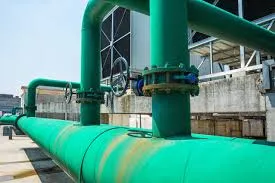
-
 Afrikaans
Afrikaans -
 Albanian
Albanian -
 Amharic
Amharic -
 Arabic
Arabic -
 Armenian
Armenian -
 Azerbaijani
Azerbaijani -
 Basque
Basque -
 Belarusian
Belarusian -
 Bengali
Bengali -
 Bosnian
Bosnian -
 Bulgarian
Bulgarian -
 Catalan
Catalan -
 Cebuano
Cebuano -
 China
China -
 China (Taiwan)
China (Taiwan) -
 Corsican
Corsican -
 Croatian
Croatian -
 Czech
Czech -
 Danish
Danish -
 Dutch
Dutch -
 English
English -
 Esperanto
Esperanto -
 Estonian
Estonian -
 Finnish
Finnish -
 French
French -
 Frisian
Frisian -
 Galician
Galician -
 Georgian
Georgian -
 German
German -
 Greek
Greek -
 Gujarati
Gujarati -
 Haitian Creole
Haitian Creole -
 hausa
hausa -
 hawaiian
hawaiian -
 Hebrew
Hebrew -
 Hindi
Hindi -
 Miao
Miao -
 Hungarian
Hungarian -
 Icelandic
Icelandic -
 igbo
igbo -
 Indonesian
Indonesian -
 irish
irish -
 Italian
Italian -
 Japanese
Japanese -
 Javanese
Javanese -
 Kannada
Kannada -
 kazakh
kazakh -
 Khmer
Khmer -
 Rwandese
Rwandese -
 Korean
Korean -
 Kurdish
Kurdish -
 Kyrgyz
Kyrgyz -
 Lao
Lao -
 Latin
Latin -
 Latvian
Latvian -
 Lithuanian
Lithuanian -
 Luxembourgish
Luxembourgish -
 Macedonian
Macedonian -
 Malgashi
Malgashi -
 Malay
Malay -
 Malayalam
Malayalam -
 Maltese
Maltese -
 Maori
Maori -
 Marathi
Marathi -
 Mongolian
Mongolian -
 Myanmar
Myanmar -
 Nepali
Nepali -
 Norwegian
Norwegian -
 Norwegian
Norwegian -
 Occitan
Occitan -
 Pashto
Pashto -
 Persian
Persian -
 Polish
Polish -
 Portuguese
Portuguese -
 Punjabi
Punjabi -
 Romanian
Romanian -
 Russian
Russian -
 Samoan
Samoan -
 Scottish Gaelic
Scottish Gaelic -
 Serbian
Serbian -
 Sesotho
Sesotho -
 Shona
Shona -
 Sindhi
Sindhi -
 Sinhala
Sinhala -
 Slovak
Slovak -
 Slovenian
Slovenian -
 Somali
Somali -
 Spanish
Spanish -
 Sundanese
Sundanese -
 Swahili
Swahili -
 Swedish
Swedish -
 Tagalog
Tagalog -
 Tajik
Tajik -
 Tamil
Tamil -
 Tatar
Tatar -
 Telugu
Telugu -
 Thai
Thai -
 Turkish
Turkish -
 Turkmen
Turkmen -
 Ukrainian
Ukrainian -
 Urdu
Urdu -
 Uighur
Uighur -
 Uzbek
Uzbek -
 Vietnamese
Vietnamese -
 Welsh
Welsh -
 Bantu
Bantu -
 Yiddish
Yiddish -
 Yoruba
Yoruba -
 Zulu
Zulu
Exploring the Dynamics of FRP Transition in Modern Applications
The FRP Transition A Shift Towards Resilience and Sustainability
In recent years, the transition towards Fiber Reinforced Polymer (FRP) composites has become a pivotal movement in various industries, notably construction, automotive, aerospace, and even sporting goods. This transition is primarily driven by the need for materials that offer superior performance, resilience, and environmental sustainability. The application of FRP technology in structural engineering, in particular, has shown significant promise in addressing contemporary challenges related to material durability and the overarching goals of sustainable development.
The FRP Transition A Shift Towards Resilience and Sustainability
One of the most vital aspects of the FRP transition is its role in enhancing the resilience of infrastructure. As climate change exacerbates the frequency and severity of natural disasters, engineering solutions must adapt to ensure longevity and safety. FRP materials provide a unique advantage; their flexibility and toughness allow structures to withstand extreme forces, whether from earthquakes, hurricanes, or other catastrophic events. This transition from conventional construction materials to FRP solutions represents a proactive approach towards building infrastructure that not only endures the elements but also contributes to the safety and well-being of communities.
frp transition

Moreover, the environmental benefits of FRP cannot be overlooked. The production of FRP materials often involves less energy-intensive processes compared to the manufacture of traditional building materials. Additionally, FRP composites can lead to lighter structures, which in turn reduce the overall amount of material needed and lower transportation emissions. The recyclability of certain FRP composites is also an emerging field of research, as it aligns with the global push towards a circular economy. By developing methods to recycle and repurpose FRP materials, industries can significantly reduce waste and environmental impact.
While the advantages of FRP are evident, the transition is not without its challenges. Issues such as higher upfront costs, the need for specialized skills in application and repair, and the long-term durability of recycled FRP materials must be addressed. Research and development play a crucial role in overcoming these barriers. Continued investment in innovation will facilitate greater adoption of FRP technologies and enhance their functionality in practical applications.
In conclusion, the transition to Fiber Reinforced Polymers marks a significant advancement towards more resilient and sustainable materials in various industries. By prioritizing FRP for construction and other applications, we are not only addressing the immediate challenges posed by climate change but also laying the groundwork for a more sustainable future. As we continue to explore and optimize this transition, the potential for FRP to revolutionize the way we build and maintain our infrastructure is immense, promising to enhance both performance and sustainability for generations to come.
Latest news
-
Exploring the Benefits of Top Hammer Drifter Rods for Enhanced Drilling PerformanceNewsJun.10,2025
-
High-Precision Fiberglass Winding Machine for GRP/FRP Pipe Production – Reliable & Efficient SolutionsNewsJun.10,2025
-
FRP Pipes & Fittings for Shipbuilding - Corrosion-Resistant & LightweightNewsJun.09,2025
-
Premium FRP Flooring Solutions Durable & Slip-ResistantNewsJun.09,2025
-
Premium Fiberglass Rectangular Tanks Durable & Lightweight SolutionNewsJun.09,2025
-
Tapered Drill String Design Guide Durable Performance & UsesNewsJun.09,2025









